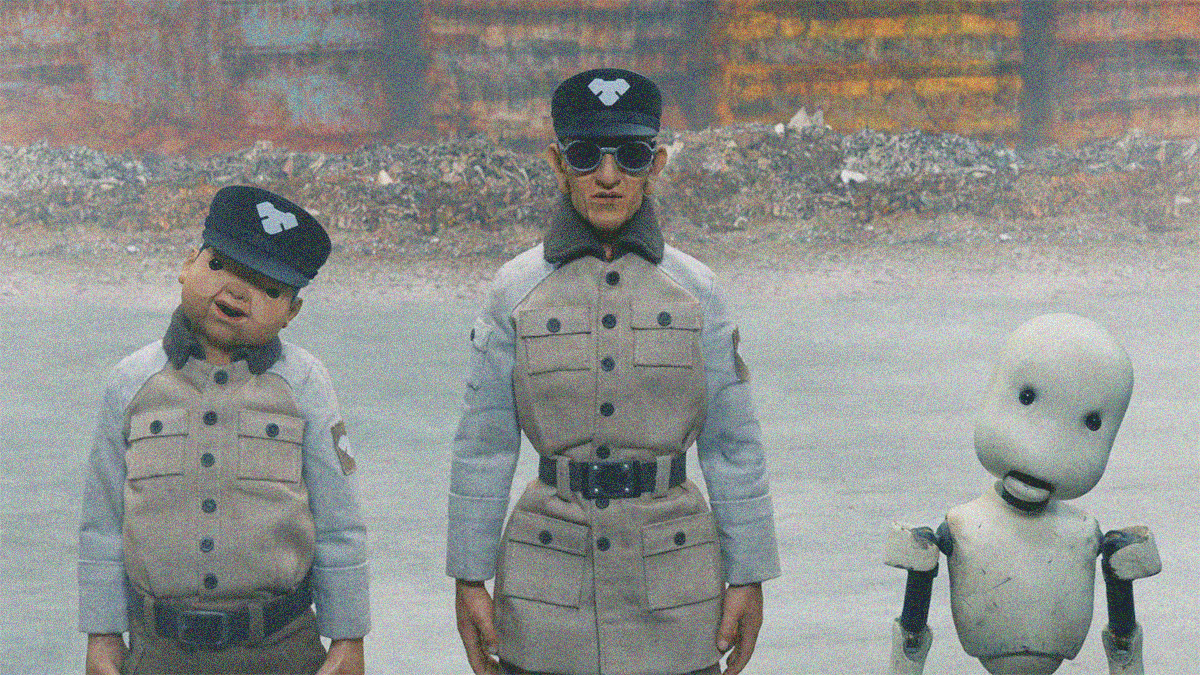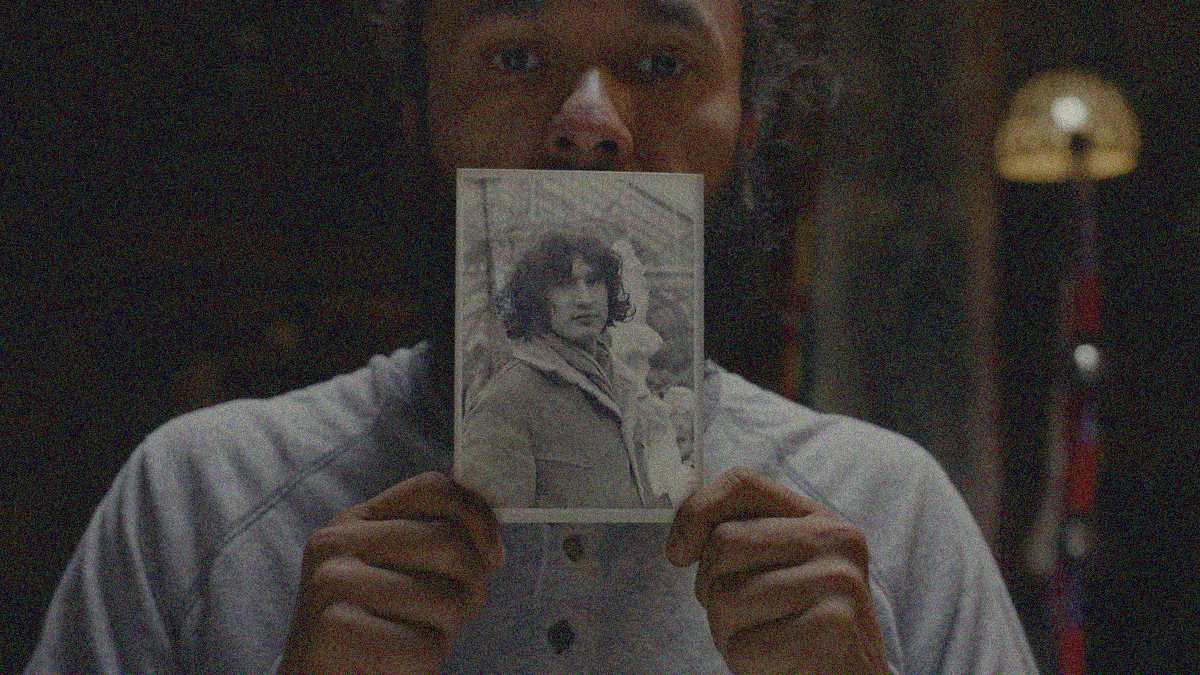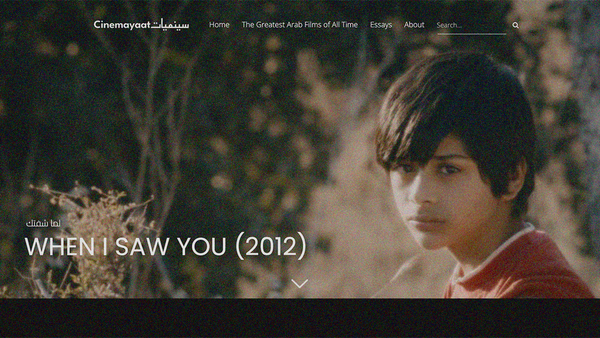TIFF 2025: Day Thirteen
Until next time ...

That's a wrap on the 50th anniversary of the Toronto International Film Festival and it was a great year with no real clunkers to speak about (that I saw).
While I was able to complete my "50 for the 50th" campaign, the breadth of titles TIFF provides audiences is revealed upon realizing only three of them won an award and only two were on my pre-fest list of titles coming out soon in 2025. I also ended up catching six of the record eight Indigenous Canadian entries.
Here's hoping they all find distribution.
My Top Ten:
1) Retreat, directed by Ted Evans
2) Sk+te'kmujue'katik (At the Place of Ghosts), directed by Bretten Hannam
3) Mārama, directed by Taratoa Stappard
4) Whitetail, directed by Nanouk Leopold
5) Under the Same Sun [Bajo el mismo sol], directed by Ulises Porra
6) Carolina Caroline, directed by Adam Carter Rehmeier
7) Our Father [Oče naš], directed by Goran Stankovic
8) Laundry [Uhlanjululo], directed by Zamo Mkhwanazi
9) Palestine 36, directed by Annemarie Jacir
10) Lovely Day [Mille secrets mille dangers], directed by Philippe Falardeau
All reviews can be found at my "TIFF 2025" tag on Letterboxd.

Junk World

The film opens on a broken down "God" booting up to speak with primitive creatures and declare himself to actually be their God. Anyone who has seen Junk Head knows that "God" would never do such a thing. He spent that whole adventure laughing at the Mulligans hailing him as one because he was merely a human sent down into the depths of the underground on an insane expedition to solve the reproduction crisis above. Those weird humanoids were so removed from our history, though, that they assumed the surface was literally Heaven.
So, what is "God" doing at the start of Takahide Hori's Junk World? Well, nothing. Because that's not "God"—at least not the one we know. The only real connective tissue to the animator's previous feature is therefore the thematic element that this robotic model would be used to house the consciousness of someone others believe to be a deity (until the end credit stinger provides a more concrete tether). The reason is simple: this chapter takes place a millennia before its predecessor. Humans aren't just egos protected within shells. They still look like us.
Even so, this isn't the origin of everything with Hori's universe. It's not even the origin of that specific body. We do, however, learn more about both via exposition explaining our entry point being two hundred and thirty years after the Third Truce Agreement between humans and Mulligans—the third since the latter rebelled against their maker and declared the underworld their domain. Both sides are still indoctrinated to hate the other, but enough generational peace has allowed for a joint expedition to study a mysterious scientific anomaly.
The humans are led by Lady Torys (Atsuko Miyake) and her robot sidekick Robin (Kusako Matsuoka) since Ambassador Morse (Hori) and his sycophant (Miyake) are useless figureheads who complain more than anything else. The Mulligans are led by Dante (Hori), known to be one of the oldest of their artificial species. Both are soldiers in it for the adventure and driven by justice. So, they're quick to become allies once a common trust is cultivated courtesy of a radical Mulligan cult known as the Gyura trying to kill them.
That sect is very Yiga Clan coded from Breath of the Wild and led by Prion (Hori) to seek dominion over the entire planet by ritualistically consuming humans. The anomaly is a temporal rift that can take anyone who enters it to the past and therefore create the potential of branching an alternate dimension. And there's still another character named Bastet (Miyake) who we won't meet until the logistics of what's transpiring takes fuller shape in Act II. Because, unlike Junk Head's violently meandering skit-like progression, Junk World has a solid script.
Everything about this film is a massive step-up. The choice to stay above ground with humans ups the ante as far as character design (even the lumpier Mulligans are given more detailed wardrobe—with the Gyura's being S&M inspired—for more elaborate movements) and the alternate world narrative allows for new species to be born that look wholly different from anything else we're seen. The action is full hand-to-hand combat rather than just running and crushing too. Even the mushrooms have become more anatomically correct (iykyk).
Hori's humor is also more assured with silliness via farts and farce via music cues augmenting the built-in homoeroticism born from Prion's leather-clad autocracy and Morse's lackey going full Smithers to his Mr. Burns. Even the "stupidity" gags come off less mean because it's not Mulligans mocking "Junkers" for being useless like in the first film. Hori is instead mocking characters like Morse by ensuring their penchant for name-calling is more about their own entitlement than their victim's struggles. He's punching up rather than down. It makes a difference.
The plot's cohesiveness is the real bright spot, though. While I remember the two-hour Junk Head at Fantasia Fest feeling long, the tighter 100-minute cut released four years later didn't solve all its pacing issues. This one conversely flies—a major compliment considering its sci-fi conceit demands we watch certain sequences two or three times from alternate vantage points and realities. These loops are strong with the choice to only show one character's full journey through the anomaly (so the rest can be inferred) proving crucial to that swiftness.
Hori gets it too. Not only does he excise the boring pieces inherent to intentional repetition, he also mocks his own convolution by having his characters express a willingness to explain the science only for Torys to say, "No thanks." Because it's not necessary (if it's truly explainable at all). We get the gist to let the emotions of Torys, Dante, Robin, and Bastet carry us through. Its environment must eventually degrade into the dirty industrial void of despair we see a thousand years later, so we know everyone isn't getting a happy ending. Except us.
The stop-motion animation earns a smile regardless of the weightier plot and nimbler production design increasing our investment in the whole. So too does discovering the latest crazy, grotesque, and funny ideas Hori concocts to test our gag reflexes and dare us to jump up and cheer when someone deserving of a comeuppance finally receives it (sometimes more than once). It all coalesces into a truly singular piece of art that should be too niche for the immense effort necessary to bring it to life. That's the beauty of independent filmmaking.
8/10
Ni-Naadamaadiz: Red Power Rising

Anicinabe Park in Kenora, Ontario was the site of a ninety-day Indigenous youth occupation in 1974. Led by Louis Cameron with assistance from the American Indian Movement, these armed "warriors" suggested all the tourists who were camping in the area leave because they wouldn't be responsible for what happened to them once the Ontario Provincial Police inevitably arrived. Their demand was for the park to be given back to the Ojibway people, and they were willing to stand their ground regardless of death.
It just goes to show how little Canada cared about the plight of their Native population that only eight minutes of footage from the event still exists today. That would obviously change soon after with the Native People's Caravan moving from Vancouver to Ottawa and the establishment of an embassy once it ended in a violent clash provoked by local law enforcement. Fast forward to the past decade's revelations of mass graves at sites of old residential schools and you can easily track current activism back to Anicinabe Park.
Despite sparse video, however, some participants are still alive today. With new interviews of their experience (both those in the park and those helping from outside) and an unpublished manuscript written by Cameron found by his son Tyler (who narrates from it), director Shane Belcourt and co-writer Tanya Talaga's Ni-Naadamaadiz: Red Power Rising creates a definitive timeline of the event and its impact. Yes, the nation's eyes are now open to the racism and abuse it inflicted, but, as one interviewee notes, present-day Kenora isn't all that improved.
The story is uncensored as far as shedding light on why an armed protest was staged. From a published paper about "accidental" deaths involving Indigenous citizens to descriptions of the KIB (Kenora Indian Beaters), violence was pervasive. It was therefore only a matter of time before the Six Nations organized a response since the prevalent statistic cited of having just a fifty-fifty chance of living past age twenty-eight truly meant they had nothing to lose. And regardless of any substantial change, taking back their voice was worth the attempt.
It's an often-harrowing account. Tyler Cameron breaks down a couple times reading his father's descriptions of atrocities and other subjects' nonchalant recounting of their near-death experiences both proves their dedication and just how close things got to all-out bloodshed. Talk about city hall meetings with white Canadians readying themselves for vigilante justice only fueled the uncertainty around whether anyone would survive ... not that the participants' lives weren't forever turned upside down by surveillance and arrests anyway.
An historian is included for context, but Ni-Naadamaadiz: Red Power Rising is mostly first-hand recollections and archival interviews when not focused on Tyler and his brother going through Louis' documents. Their mother Lynn Snead also plays a big role as someone who was there and who understood her ex-husband's motives and demons. Their words and the protest rhetoric really provide a sense for why land acknowledgements are so important. Because this isn't just property to Native people. It's a piece of their identity. Their soul.
Much like the stand taken in 1974 to ensure TV cameras couldn't turn away, films like this ensure history won't be keep being swept under the rug. It's about speaking truth to power and also refuting the propaganda of a police system still quick to dismiss Indigenous deaths as accidents or drunken happenstance than investigate a potential hate crime. And it's about memorializing heroes like Louis Cameron who acted with conviction and spoke with thoughtful purpose. Because it wasn't violence that made him an enemy of the state. It was his words.
7/10

Pulled from the archives at cinematicfbombs.com.
Free Solo screened on September 9, 2018 at TIFF.





